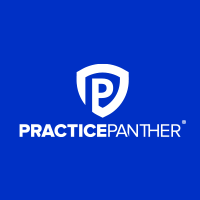Project management spans both the micro and macro of running a business, from tracking the progress of a single project to shifting the long-term vision of the company itself. Project managers take responsibility for developing, implementing, and monitoring different projects within a company. They play a key role in various industries, from real estate to retail, and they are just as important for a law firm as any other business.
Legal project managers tailor the fundamentals of the field to the unique needs of a law firm. From analyzing case intake procedures to creating legal calendars, a legal project manager can make the difference between landing or missing out on a million-dollar case. This blog will discuss the benefits of using legal project management software that allows you to organize, execute, and track the progress of your cases.
What Is Legal Project Management?
Legal project management is uniquely focused on the attorney-client relationship. Few industries interact with their clients in the same way law firms do; attorneys are often helping their clients through some of the worst times in their lives. Clients depend on their attorneys to advocate for their best interests. According to Thomson Reuters, legal clients increasingly want a firm that operates efficiently and communicates consistently with them.
A legal project manager can help your firm by:
- Creating legal calendars and workflows
- Managing client relationships
- Allocating and monitoring budgets for cases
- Supporting employees and tracking their progress
Benefits of Legal Project Management
Legal project management offers three main advantages: increased efficiency, client satisfaction, and the ability to monitor your progress so that you can grow your law firm.
Efficiency
Law practice management can improve efficiency across departments and facilitate collaboration between cross-functional teams. It can also help you allocate your firm’s resources, such as your employees and your case budgets, in a more cost-effective manner, according to the American Bar Association (ABA).
Legal project management software can help standardize these processes, minimizing human-prone errors. For example, a centralized law firm document management software can help you file your documents, making it easier to access and secure them.
Client Satisfaction
When it comes to client satisfaction, legal technology can also help you with on-time deliverables. For example, a legal calendar securely shared through a role-based access control system can help you and your employees meet important deadlines, such as a statute of limitations. It can also help you keep track of trial dates so that you can be prepared for upcoming legal matters.
Your case intake and client communication procedures are just as important, and legal technology can help with this, too. Business texting software can help legal professionals improve communication with their clients, which is key to the attorney-client relationship.
Monitoring Progress
After a case closes or a quarter passes, you will also want to reflect on your progress so that you can identify areas for improvement. Legal project management hinges on monitoring progress since that’s the only way to grow your practice. You can use legal project management tools to track your cases’ progress, your employee’s productivity, and your revenue. This will allow you to pinpoint where you can make better use of resources and talent.
Monthly, quarterly, and yearly audits can also help you see the bigger picture of how your firm is performing and whether you are reaching your goals. Without such measures, it’s easy to get stuck in the day-to-day tasks and fall off track.
How to Create a Legal Project Management Plan
Before you create a legal project management plan, you may want to conduct an audit of your progress with recent cases to get an idea of what types of goals you want to achieve. From there, you can follow these steps to create your plan:
Define Project Scope and Objectives
The first step in legal project management involves defining the scope and objectives of the project. This may look different for each case, though. For example, some cases start with an insurance claim, while others proceed directly to litigation. You will also have to identify the stakeholders involved and determine what your deliverables will be.
Break Down the Project
After defining the scope and objectives, you can break your project down into steps. Some steps may look like this:
- Investigating the case
- Gathering evidence
- Completing and submitting documents
- Negotiating
- Attending a trial
Once again, your steps will depend on the particular project.
Assign Tasks and Allocate Resources
Once you have a game plan, you can assign tasks to employees and allocate resources for the case. You can use legal management software to keep track of your employee’s responsibilities and the budget for a particular project.
Set Key Performance Indicators (KPIs)
Legal project management software can also help you determine and track milestones for your project. Setting key performance indicators (KPIs) will also help your employees understand their roles and responsibilities. You can use metrics to track your KPIs.
Create a Project Schedule/Timeline
Legal cases are time-sensitive, especially when they involve lawsuits. The last thing you want is to realize you have to appear in court the next day without having all your files and arguments in order. Each case should have a project schedule to help you and your employees meet important deadlines.
Monitor Regularly
Finally, it’s important to regularly monitor your cases’ progress. This may involve tracking negotiations with insurers, for example. You will also need to regularly check in with a client and obtain signatures for settlements. Once again, legal project management software can help you and your employees stay up to date with the progress of a case.
Ways to Manage Legal Projects
Legal practice management software can help you plan, execute, and monitor your project. PracticePanther’s case management software allows for efficient case management and planning to ensure attorneys have sustainable project management tracking. Take a look at some of the features included in this software:
Automated Workflows
Automated workflow helps with task assignment and completion tracking. Workflows in PracticePanther provide attorneys with the ability to customize each project with task assignments, completion dates, and more. These workflows will also help you hold your employees accountable for their share of the work with a particular case or project.
Calendaring
You will need help managing court dates, tasks, and project milestones. Legal calendaring is by far one of the most important resources for an attorney. An organized and up-to-date calendar can ensure attorneys are staying on top of their tasks and projects. PracticePanther’s legal calendaring allows attorneys to integrate LawToolBox to stay on top of all court dates and manage their tasks easily with a daily agenda.
Reporting
Having an effective reporting system can help identify any pain points and success. PracticePanther offers multiple built-in reports with customization to allow attorneys to view their performance, successes, and results.
The Importance of Tracking Legal Projects
Tracking legal projects is one of the most important parts of legal project management because it allows you to take a step back from each project and assess your original approach. Over time, your law firm can incorporate new protocols and systems to help you achieve your goals with more efficiency. This is one of the most important features of legal project management software, according to Lawyerist.
The benefits of tracking legal projects include:
- Visibility and accountability
- Effective resource management
- Adherence to deadlines
- Continuous improvements
- Measurable results




 />i
/>i

